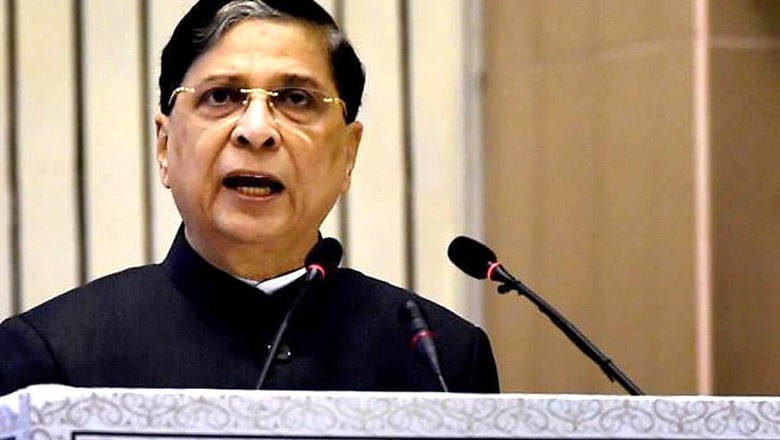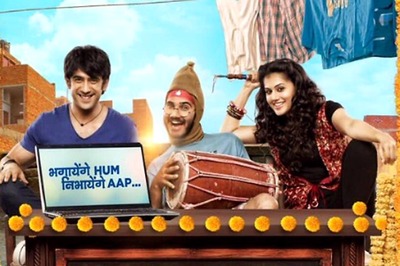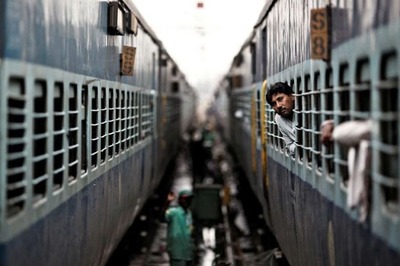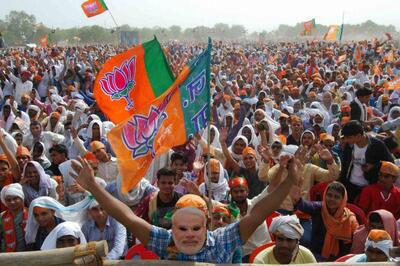
views
New Delhi: In January, when the four senior most judges of the Supreme Court addressed the historic press conference turning the lens on administrative and judicial irregularity in the Supreme Court, no one thought that the sacrosanct position of the Chief Justice of India would be in question.
Now, with opposition leaders led by the Congress garnering support for a draft impeachment motion against the CJI, the question is -- Can the Chief Justice be impeached like other judges of the Supreme Court or is the process different?
India has never faced a single case of a judge being impeached, so how difficult would it be for the CJI? News18 takes you through the case, procedure and previous examples of similar motions.
Who has moved the impeachment motion against the Chief Justice of India, Dipak Misra?
Before diving into the question of how an impeachment motion pans out, let us understand who all are circulating the draft impeachment motion against the CJI.
According to reports, a draft proposal for moving an impeachment motion against the CJI has been circulated to opposition parties by Indian National Congress. NCP leader and Senior Advocate, Majeed Memon, has confirmed that the draft motion has been signed by Congress heavyweights and that NCP has decided to support it.
Among other parties who are on board to move the motion is the Samajwadi party. There are also reports that even the left parties and Mamata Banerjee led Trinamool Congress would support the motion as she said that its “difficult to ignore what the judges spoke about in the press conference in January”.
What is the case on the basis of which impeachment is being sought?
The entire genesis of moving an impeachment motion against CJI Misra gained heat after four senior most judges of the apex court addressed the historic press conference where it highlighted issues with regard to improper system of allocation of cases and had also put the spotlight on judicial impartiality.
As per reports the draft proposal deems "abuse of authority to arbitrarily assign individual cases to select judges" as one of the grounds for moving an impeachment motion.
One of the first cases under the lens is that of the illegal gratification in the Prasad Education Trust case. This was a case related to a bribery scam in which medical institutions were alleged to have given kickbacks to senior members of the judiciary for clearances to set up medical colleges. It has been alleged that the CJI had submitted a false affidavit when he was an advocate appearing in a land acquisition matter.
Another issue which had stirred the hornet’s nest was the case of Judge Loya’s death. The four judges’ presser led to discussions on how the CJI’s refusal to list the PIL demanding an independent probe into Judge Loya’s death to a bench headed by senior most judges. Congress later held another press conference and spoke about the case which had its lens also on BJP president, Amit Shah, as Judge Loya was hearing the Soharabuddin fake encounter case which has Shah as one of the accused.
What is the basic mode of disqualification of a Supreme Court judge in India?
Impeaching or removing the Chief Justice of India cannot happen for any frivolous ground. In 2013, when Shirani Bandaranayake, the 43rd Chief Justice of Sri Lanka, was impeached by Parliament and then removed from office by President Mahinda Rajapaksa, the country went through an unprecedented turmoil followed by a series of rulings against the government.
In India, legally speaking, a Chief Justice, like any other Supreme Court judges can be impeached. This by the constitutional provision of Article 124. Article 124 acts to keep check on the judiciary by the legislature.
However, unlike other countries there has been no cases of impeachment in India as of now.
Article 124 (4) of the Constitution of India: A Judge of the Supreme Court shall not be removed from his office except by an order of the President passed after an address by each House of Parliament supported by a majority of the total membership of that House and by a majority of not less than two-thirds of the members of that House present and voting has been presented to the President in the same session for such removal on the ground of proved misbehavior or incapacity.
What are the hiccups one has to overcome to achieve CJI impeachment?
Can impeaching the CJI be an easy task? Certainly not. The provisions have been kept deliberately complicated so that no one can initiate such impeachment proceedings as per their whims and fancy.
For initiating the impeachment proceeding both Article 124 (2) (b), Article 14 (4), Article 124 (5), and the Judges Inquiry Act 1968, has to be taken into account.
The first step for such an act is issue a notice of motion by 100 MPs from the Lok Sabha or 50 MPs from the Rajya Sabha. This motion for removal can be moved in either of the house.
Now the next step is to check whether the speaker admits the motion or not. The speaker has the right to reject it.
If in case the speaker decides to admit the motion, then the speaker or the chairman of the house constitutes a three member committee to investigate the charges. The committee would look into the case and the charged levelled against the CJI.
Since this case is against the CJI, the three member committee will comprise of a senior judge of the Supreme Court, a judge of the High Court and a distinguished jurist. The committee usually has the powers of a civil court and can question witnesses and examine documents to investigate the charges.
In case the committee decides to support the motion, then that motion is taken up for discussion in the house where it had been introduced and must be passed by a special majority of the house. It is after this step that the motion is taken up in the next house where again it needs to be passed by the two thirds majority.
It is after this stage that the President is approached to remove the CJI. But it is only possible after both the houses pass such a motion with two third majority. But this case can fall through at any stage whether it be the dismissal by the speaker to admit the motion or the committee failing to find any basis in the charges levelled or the motion collapsing in either of the house.
What are the past instances when Supreme Court judges or HC Judges were impeached?
V. Ramaswami, Chief Justice of Punjab and Haryana, was the first judge against whom impeachment proceedings were initiated in 1993 by a motion through the Lok Sabha. The two thirds majority for passing the motion was lost as the Congress abstained.
Soumitra Sen, Calcutta High Court Judge -- He was the only judge in India history who had passed the first two hurdles of impeachment and had come close to being impeached after Rajya Sabha passed the motion of his dismissal with special majority. The charge against him was misappropriation of funds while he was appointed as receiver by the court as a lawyer. However before Lok Sabha could take up the motion for consideration, Justice Sen had resigned from office which led to the closure of the case.
Another Judge who resigned before impeachment proceedings could be initiated against him was PD Dinakaran, Chief Justice of Sikkim High Court in 2011.
Even Justice JB Pardiwala of Gujarat High Court was at the receiving end of an impeachment motion by 58 Rajya Sabha MPs after a section of the society objected to some wordings in his judgment which questioned reservation in the Constitution. Justice Pardiwala had called it “shameful” that reservation continued even 65 years after independence.
Later Justice Pardiwala removed the wordings from his judgment leading to closure of the impeachment case.




















Comments
0 comment